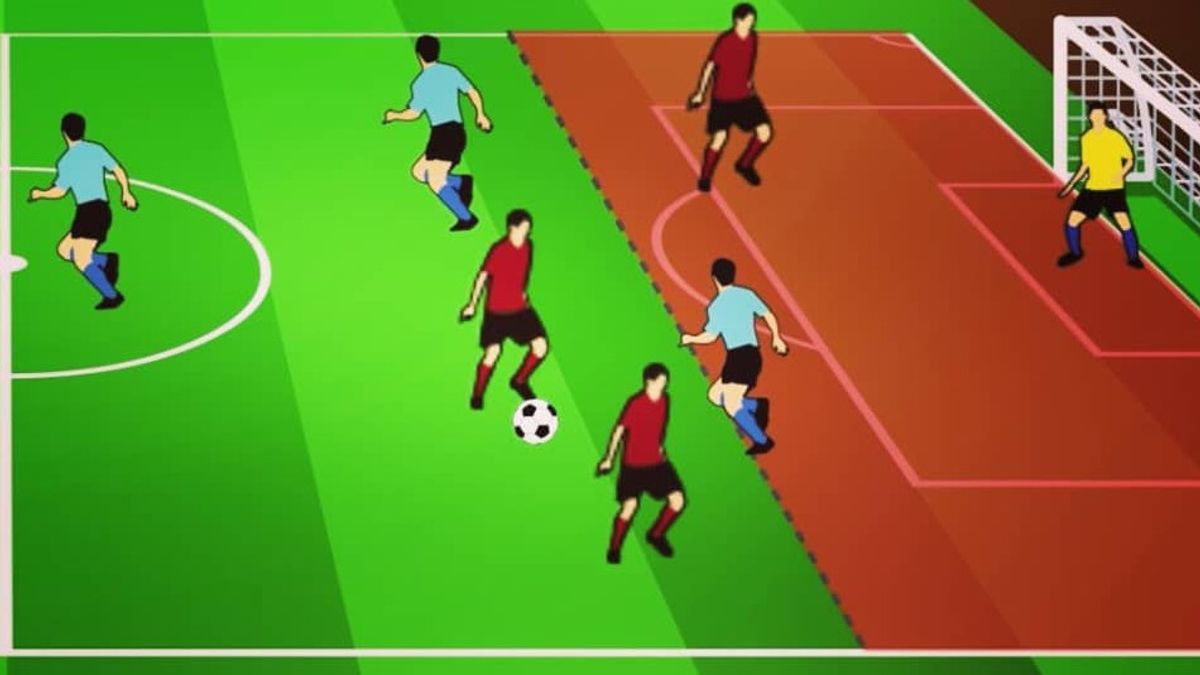JAKARTA – The term offside is closely related to the world of football. The term is listed in the Laws Of The Game set by The International Football Association Board (IFAB).
In modern football, this offside rule has been embodied in the standard rules of football since 1863. This standard rule of football was first born at the Freemasons Tavern when 11 schools and clubs gathered to formulate the rules regarding this very popular game.
The offside rule was deemed necessary because many players were lazy to dribble. Instead they prefer to wait for the ball in front of the opponent's goal in groups.
Citing the official FIFA website, offside in football refers to the sport of rugby. The concept is the same, forbidding a player to just sit quietly waiting for a pass in front of the enemy's goal.
Historically, the offside rule has evolved since it was first introduced in 1863. The first change occurred in 1925, while the second change was made in 1990 which is valid until now.
At the beginning of the offside rule, players who are considered offside except for three players from team B are in front of a team A player (including the goalkeeper) who wants to attack.
Meanwhile, the change to the offside rule in 1925 only rested on the number of players blocking. This means that a player from team A will not be considered offside if in front of him there are two people from team B (including the goalkeeper).
Then, the one defender rule became the third revision carried out by FIFA in mid-1990. In this rule, offside will apply to a player in front of only one player (usually the goalkeeper, but can also be another player).
Meanwhile, in 1995, after dismantling the offside rule, FIFA and IFAB decided to revise and make the rules more relaxed. One of the players is declared free from offside if not involved in the game.
In the latest rules, a player is declared offside if he is closer to the goal line than the ball and the last two opposing players.
Meanwhile, a player is not in an offside position if he is in his own area, parallel to the opponent's penultimate player, parallel to the last two opposing players, and the player's position that counts is all limbs except the hands.
Even though there are clear rules, offside is still a matter of controversy, especially when the referee makes a wrong decision. Based on such cases, IFAB in 2016 launched Video Assistant Referee (VAR) technology.
VAR has the task of examining linesman decisions using video recordings. The decision of the field court to annul certain goals that are considered the owner is in an offside position will be re-examined with this advanced technology.
Live trials of the VAR system began in August 2016 in a match between two Major League Soccer reserve teams. This match referee, Ismail Elfath reviewed two fouls in this match and after consulting with video assistant referee Allen Chapman, decided to award red and yellow cards in the incident.
Video surveillance was introduced a few months later in an international friendly between France and Italy.
The A-League in Australia became the first to apply the VAR system to a professional league match on 7 April 2017, when Melbourne City faced Adelaide United. This match ended without the use of VAR.
The first VAR intervention in a professional league match occurred on 8 April when Wellington Phoenix faced Sydney FC. VAR identifies an illegal handball act inside the penalty area and awards a penalty kick.
The English, Chinese, Japanese, Arabic, and French versions are automatically generated by the AI. So there may still be inaccuracies in translating, please always see Indonesian as our main language. (system supported by DigitalSiber.id)













